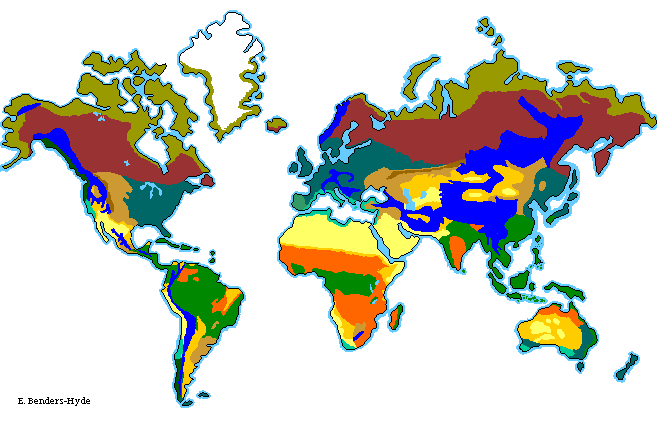
Earth's 8 Biomes

Temperate Deciduous Forest

Location
This biome is located in Canada, United States specifically the eastern parts of it, Europe, Russia, and Asia specifically China and Japan.
Human pop.
This biome is very populated. The population of Canada is 36 million, Europe is 741 million, United States 323 million, Russia is 144 million, China is 1.3 billion and Japan is 127 million. So the total population would be the addition of all of that.
Ecological Threats
The ecological threats of this biome would be global warming and climate change, deforestation and overgrazing. Global warming and climate change threatens every biome because the higher the temperatures and less rain the more risks there are of wildfires and other disasters.
Natural Resources
Natural Resources include timber,
Characteristics
Abiotic
The deciduous forest has four distinct seasons, spring, summer, autumn, and winter. The summers are warm to hot, the winters are cold, spring is the rainy season, fall is the cool time of year. The trees loose their leaves in the cooler temperatures as well. The average annual rainfall is 30 to 60 inches.
Biotic
Many deciduous trees with little coniferous.Animals are deer, rodents, birds, wolves, fox, coyotes, bears, chipmunks, squirrels and weasels. Animals that live here adapt to the cool climate by hibernating in winter.

Chaparral/Mediterranean

Location
This biome is found in a little bit of most of the continents. It is in California, Chile, South Africa, Australia, and the Mediterranean.
Human pop.
The human population would be large. The chaparral is located across the coasts of United States, South America, South Africa, Australia and the Mediterranean. So the human population would be the population of those places
Ecological Threats
Global warming and climate change. If the temperatures keep rising more drought and wildfires will happen in this biome causing species to either have to move or die off. Other threats are habitat destruction, poor nutrients in the soil, leaving it vulnerable to erosion.
Natural Resources
Some natural resources would be oils from the trees, lumber, water, minerals, and some metals.
Characteristics
This biome is sometimes used in movies for the "Wild West" look. Very wet, windy, not a large variety of species.
Abiotic
Has many different types of terrain such as rocky hills, flat plains, and mountain slopes. It is very hot and dry in the summer and more mild in the winter.
Biotic
Animals include deer, coyotes, lizards and insects. Vegetation includes low growing and moisture resisting plants, cacti, and olive trees. The trees have adapted to the moist conditions
Savanna
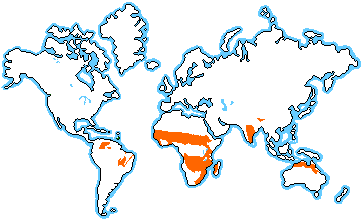
Location
This biome is located in Africa, South America, India, and Australia.
Human pop.
The population is not that populated.
Ecological Threats
The ecological threats are climate change, farming practices, and overgrazing.
Natural Resources
The natural resources are metals such as bauxite, copper, lead, zinc, silver, nickel, tin, gold, manganese, uranium and magnesite, diamonds, mineral sands, phosphate rock, kaolin, limestone and silica. Energy resources are coal and petroleum.
Characteristics
Similar to Grassland except this had very distinct dry and wet season.
Abiotic
Warm temperature year round. There are actually two seasons; a long dry winter, and a wet summer. In the dry season there's about 4 inches of rain. Between December and February no rain will fall at all. It is cooler during this dry season, but still around 70° F. There is lots of rain during the summer.
Biotic
Mainly grasses. Animals depend on the location but mainly include lions, zebras, antelope, birds, and rodents.

Tundra
Ecology Law Two: Everything Must Go Somewhere. I chose this law for these two places because they are filled with the most precipitation. With global warming and climate change on the rise, the Tundra is melting but all the water needs to go somewhere. Same with the Rainforest. The word rain is literally in the title meaning that there is a lot of it and a lot of run off. So all of that must have to go somewhere.
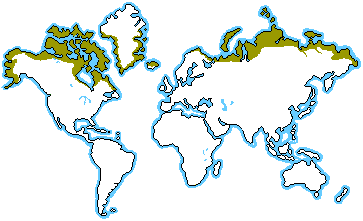
Location
Located at latitudes 55° to 70°
Human pop.
Due to the cold weathers, not a lot of people live up in these locations. The few that do are first Nations groups including the Innu and Inuit.
Ecological Threats
Global warming is the biggest threat. The warmer the Earth gets, the warmer this biome gets and all the snow and ice will melt. Melting ice is bad because it raises water levels as well. Oil spills are also a common occurrence which can injure or kill the wildlife.
Natural Resources
Some natural resources are deposits of nickel, copper, coal, gold, uranium, tungsten, and diamonds, uranium, copper, nickel, and iron. There are also natural gas, and oil located throughout
Characteristics
The tundra is similar to the desert precipitation wise. Tree growth is limited due to low temperatures. It is the coldest harshest biome of all of them. It is also the youngest.
Abiotic
. The main seasons are winter and summer. Spring and fall are only short periods between winter and summer. It is very cold and little precipitation. Very windy
Biotic
Animals include squirrels, arctic foxes, wolves, polar bears, birds, insects, fish, caribou, musk ox, rabbits and owls. Vegetation includes lichen, mosses, grasses and shrubs.Tree growth is limited due to low temperatures.

Rainforest
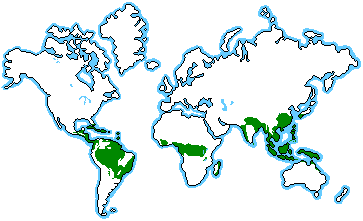
Location
There are three major geographical locations; Central America, Africa, and Indo-Malaysia.
Human pop.
The human population is 50,000,000 in the rain forest. Many different tribes live in and depend on the shelter, food, and resources the forests provide.
Ecological Threats
There are many ecological threats. One being the human population growth. The more people there are the less resources they have. Another is that human's are cutting down the trees. This is bad because the tribes of people and animals living there will have less shelter, less food and less resources to survive. They will have to move somewhere else. Another threat is mining. Apparently the rain forests are a perfect spot for people to mine the resources. Plantations for soya and palm oil are also set up in these forests.
Natural Resources
Lots of deciduous trees, vines, small plants. Fruits, sugar cane, nuts, chicle latex (chewing gum), coconut oil, cascarilla oil, some ingredients for pharmaceuticals.
Characteristics
Hot, high rainfall, near the equator, huge variety of plants and animals-half of all the worlds species. More details in the abiotic and biotic branches
Abiotic
Some abiotic features of the rain forest is are water, humidity, temperature, soil and rocks. The rain forest gets about 9 feet of water in the form of precipitation every year. Water is an essential need for survival. The temperatures are approximately 75 to 80 degrees all year around.
Biotic
Huge variety of plants and animals-half of the worlds species! There are over 300 species of trees, and the animals vary depending on which area they are in although there seem to be some species of monkeys, birds, insects and snakes throughout all locations

Boreal/Taiga Forest
Ecology Law number Four: There is no such thing as free lunch. When you use a resource, it takes away from the environment. What I'm referring to in this situation is deforestation. If we continue to cut down all of our trees and not let them have time to grow and populate, we will have none left which is obviously a bad thing because trees are a vital part of every ecosystem.
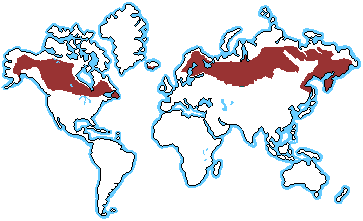
Location
Across North America and Eurasia. A lot of Canada and Russia are covered by coniferous trees and this biome.
Human pop.
The human population would be the populations of Canada, Russia, Eurasia and the parts of North America.
Ecological Threats
Some ecological threats that effect this biome are industries like logging, mining, and oil/gas development. While a lot of the forests remain in tact, the more we continue to cut them down the less we will have in the future. If we cut them down faster than they have the ability to grow, we will slowly but surely run out of them. Another threat is one that threatens all biomes and that is climate change.
Natural Resources
While, cutting down too many trees is a threat to this biome, cutting down some of them is good as they are a natural resource. That along with mineral, energy, and hydroelectric resources.
Characteristics
This biome has four seasons but fall and spring are so short is is mainly winter and summer all year around. It contains a variety of plants and animals, explained more in the abiotic and biotic branches.
Abiotic
They have short, wet, cool summers and long, cold winters. The rainfall per year on average is around 200 cm. There is poor soil quality due to the cold wet weather.
Biotic
Some animals are wolfs, beavers, deer, moose, lots of birds, and rodents. The trees are mainly coniferous.
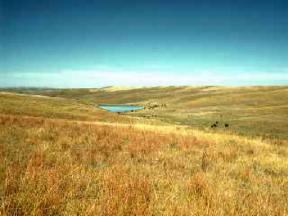
Grassland
Ecology Law Three: Nature Knows BestI chose this law because there seems to be reasons why these places are so hot and bare and do not have that many species. Nature knows what it is doing and selects why these places are the way they are.
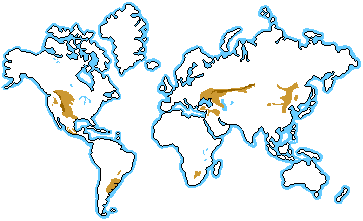
Location
In South America (Pampas), in North America (Prairies), in Africa (Savannahs) and Asia (Steppes).
Human pop.
The human population of the grassland biome is very small and isolated.
Ecological Threats
Climate change is the ultimate one for all biomes. Grassland are also being turned into farm lands instead of being the open lands that they are. This is a problem because the animals are loosing there homes and grasses are being cut down. Developing of urban areas are also endangering this biome.
Natural Resources
Some natural resources are water, lumber, and livestock.
Characteristics
Has a low diversity of wildlife, but lots of the wildlife. Animals are mainly active in the rainy season.
Abiotic
The weather in grasslands varies in location. Some are hot all year round while others have hot summers and cold winters. There is a drought almost every year, in every location though. They get between 25 and 75 cm of rain per year.(less than a forest would get but more than a desert)
Biotic
There is a lack of trees but large amounts of grass, flowers and herbs. There is a variety of animals such as snakes, mice, prairie dogs, insects, bison, various birds,
Desert
Ecology Law One: Everything is Connected to Everything ElseI chose this law for these two places because even though these two places seem very different, they do have some things in common. they are both hot places, they both are effected by global warming and climate change, they both have similar animals, etc. Some places can be very different but they are all connected in some way or another.
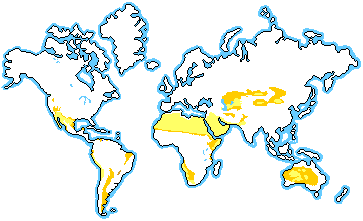
Location
The desert biome is located all across the world. Examples are Chile, Peru, Australia, Africa.
Human pop.
There are more than one billion people that live in desert regions.
Ecological Threats
Global warming is increasing the drought because there is less rainfall. The less rainfall, the higher the temperature and dryer the land which can cause wildfires.
Natural Resources
A natural resource would be minerals. Some include copper, gold, silver, uranium, and iron.
Characteristics
Known for it's lack of moisture and arid environment. Very hot.
Abiotic
Summer range from hot to very hot, winters are warm to cool. The soils are very shallow, rocky or gravely with no subsurface water.
Biotic
Some animals that live there include nocturnal carnivores like coyotes, insects, reptiles and birds. But, the main animal that lives there are kangaroo rats. They only have the ability to survive because they burrow under ground. They mainly come out at night when it is a little cooler. The deserts don't have very many plants, as it is so hot.
